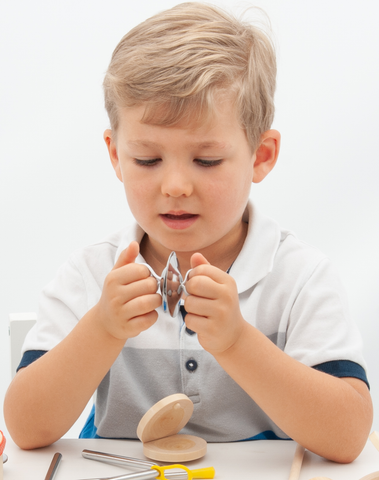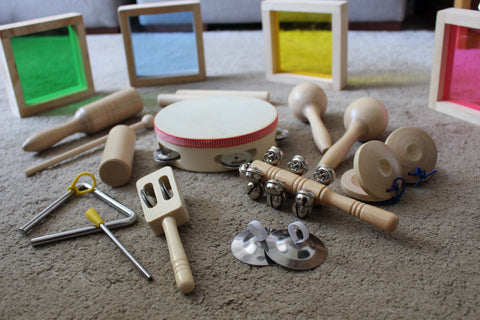Music in the early years by Lana Brooks
Nov 04, 2021
As an early years music teacher and mother I highly value the importance of musical education and the countless benefits for children. Numbers, letters, spatial awareness, speech development, team work, all these areas and more can be taught through musical education.

I have taught children who wouldn’t look in my direction at the start of term. However, I am delighted to say they have now hugely grown in self confidence, happily participate with their peers in the group and grin widely at me when I arrive to teach. Seeing this development in each child, whichever way they may grow, is definitely the highlight of my job. Through repetition and a virtually unlimited amount of songs to sing and create together, every week I witness children learning, developing and absorbing this new information. Counting songs, alphabet songs, colours, animals, directional songs, there is no limit to what can be learnt through music in the early years and beyond.


Additionally singing and music is good for your health! There is lots of evidence to suggest that singing boosts your immune system, releases those feel-good endorphins and decreases the levels of cortisol (the stress hormone) in your bloodstream.

When choosing musical instruments to use with your child it’s very important that they produce good clear sounds and the more diverse the better.
I already own the TickiT Percussion Set. It originally caught my eye as it made from a lovely smooth beechwood, the set looks as good as it feels to hold. Perfect for little hands, the handles are easy to grip and hold but feel sturdy for a child to use again and again. The set comes with ten different instruments and a really handy zip up bag to store them all in. It is perfect for musical education at home and in a class setting. The instruments are designed to last and children will love exploring how each one works and the names for each instrument. I also have my eye on the TickiT Sensory Reflective Sound Buttons, Sensory Reflective Sound Balls and Sound Prism Set. These sets interest me as they are not traditional musical instruments and the different textures and shapes give an added sensory element to musical education. You could also use these to start discussions around what they sound like, for example bells or the triangle.

Whilst a lovely complete set is a fantastic way to start off your child's love of music, musical education doesn't have to come from a ready-to-go set. Music can be made from lots of different items in your house:
- Pots and pans with wooden spoons are a really good way to make some drums.
- Elastic bands stretched over a hollow cardboard box can make a great noise when safely plucked.
- Different pasta shapes in used bottles make brilliant shakers.

There are so many benefits to a musical education for our children. Spatial awareness, working as a team, developing language skills and what's more it just makes us feel really really happy. Whatever way you choose to bring music into your child's life, I urge you to do it now, happily, boldly, loudly, and everyday!
Written by Lana Brooks, mother and early years music teacher.

